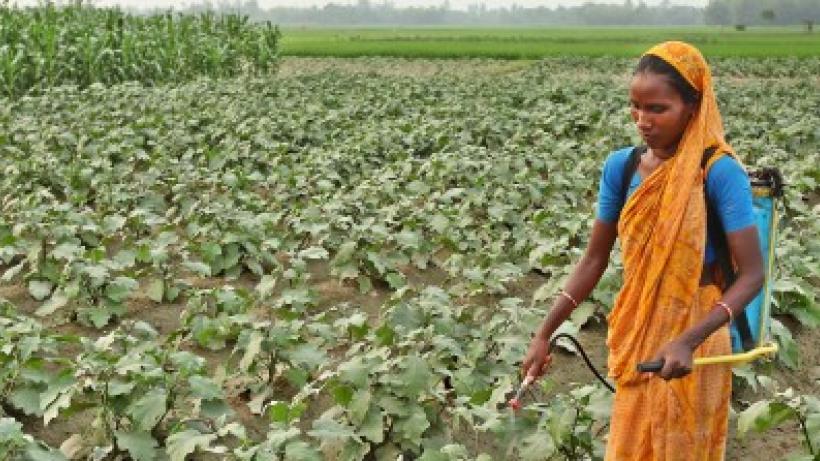
Closing the gender gap: The face of women in farming
Migration and remittance flows have radically altered the opportunities previously available to men and women to engage and participate in labour markets. Migrants workers, most commonly men searching for more lucrative jobs, send back remittances to households. In their absence, the emerging gaps in the labour markets are now increasingly being filled by women taking up agricultural labour. 15 October was the International Day for Rural Women and in today's blog, Sameeha Suraiya of BRAC explores the stories of some of these women.
It is said that the total number of hungry people in the world could be reduced by 12-17 per cent if women’s access to resources were equivalent to that of men. Still perceived to be a male-dominated field, the agriculture sector in Bangladesh has seen a dramatic rise in female participation, now exceeding 50 per cent. With many working-age men leaving home to seek work abroad, women are increasingly involved in food production. With the men gone, it is the women in these households who join the agricultural workforce for livelihood.
Starting small as a tailor, Pareeza began her transformative journey from a distressed, single mother of two to a seasoned entrepreneur. With a small loan from BRAC, Pareeza leased an enclosure to start fish cultivation. In Comilla where she lives, migrant activity is very high. When her sons decided to leave home to work in the Dubai, she was not surprised. As the remittances started to flow in, Pareeza bought an enclosure of her own where she started farming more varieties of fish. With an expanding business, her loans grew bigger. She earned the trust of the local buyers who now show up on her doorstep every month, load fish into a van to sell them at Nimsha bazaar on the outskirts of Comilla, one of the biggest wholesale markets in Bangladesh.
Climate change is no science fiction. Its effects have become increasingly visible in Bangladesh. Encouraging women’s participation in food production can lead to effective climate adaptation strategies. Mahfia a recipient of BRAC’s agricultural microloan, used to tend chores at her home until a few years back. She started helping her husband (Sharif) three years back after they lost half of the crops due to a long drought. This year, they lost over USD 1,500 (BDT 120,000) worth of crops from floods. Sharif says, “This year’s floods were devastating. I lost all the crops I had planted during spring and had to start over. I don’t know how I would have coped without the extra help.” Since Mahfia joined farming, they have expanded their cultivation to a 90-decimal land. She works on the field late into the day when Sharif is away to sell their produce at the night market. Now on their fourth loan of USD 600, the couple is gearing to plant winter vegetables.
Encouraging women’s participation in food production can lead to effective climate adaptation strategies.
The key to enhancing women’s participation in food security lies in identifying gaps in the local farming practices and responding accordingly. Sometimes, it is the low-tech and low-cost solutions which are already available that can empower them on a broader stroke. Also valuing women’s experience and the advent of simple tools have heralded new days in rural agriculture. After receiving training from BRAC as a microfinance client, Khaleda started her own vegetable cultivation with BDT 20,000. She now earns a monthly profit of BDT 70,000. She already knew how to use the various pesticides and fertilizers. When asked how, she says, “All the men in my family – my father, my grandfather and my uncles were farmers. When I was young, there were no women working on the fields in my village. I chose to work so I can feed my family better.”
The key to enhancing women’s participation in food security lies in identifying gaps in the local farming practices and responding accordingly.
Women are less likely to have access to financial services or own land. In its interventions, BRAC always stresses on the integration of gender. It learned from past experiences that the impact of increasing income that is controlled by women reflect positive effect on her family and her community. Family earnings rose when Jahanara joined her husband in poultry business after receiving training and a loan from BRAC. The two new poultry farms, containing 2,000 chickens are under her supervision, generating a profit of BDT 30,000 every month. She employs her niece and two neighbours, offering them free meals along with a salary.
It is the women who have to bear the brunt of poverty. If they could manage poverty by using critical management skills, then it would not be a stretch of imagination to believe that they could very well manage development.
This piece originally appeared on the BRAC blog.

